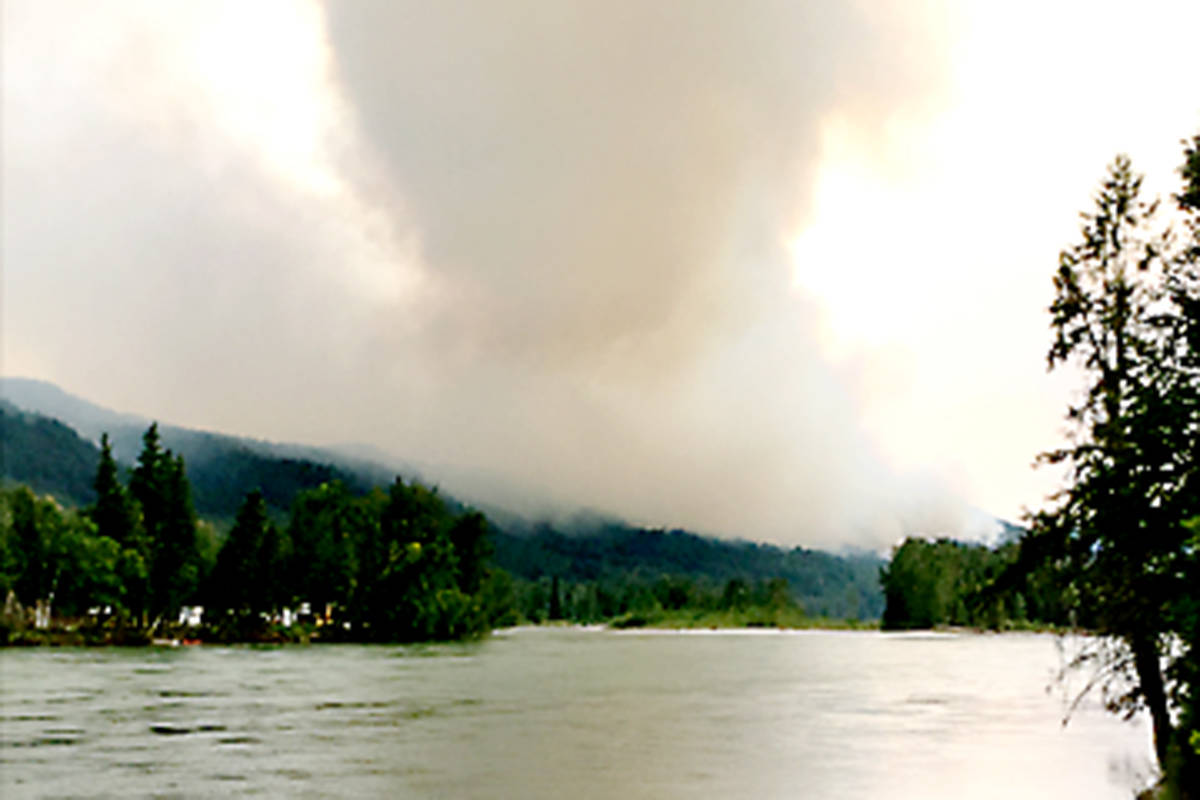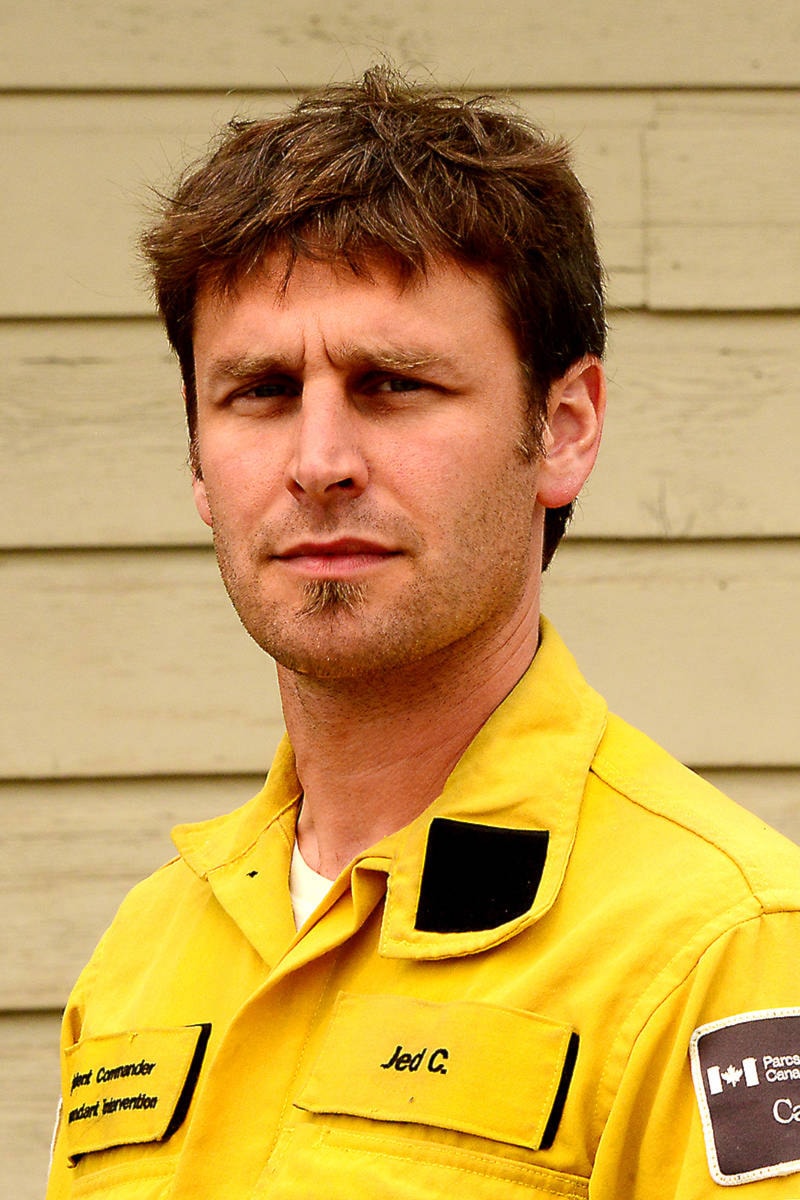UPDATE: Parts of upper Clearwater have been placed on an evacuation alert.
That’s according to the Thompson-Nicola Regional District, for the following properties:
- 815, 824 Birch Dr
- 6704, 6705, 6740 Boundary Rd
- 1080, 1120, 1140 Candle Creek Rd
- 252 Clearwater Airport Access Rd
- 1528 to 6664 Clearwater Valley Rd
- 6288, 6532, 6584 Corral Rd
- 600 to 644 Grouse Creek Rd
- 600 to 612 Moul Creek Rd
- 440 Nakiska Rd
- 5944 to 6177 Trout Creek Rd
- 1197 Barber Rd
Winds predicted for Saturday afternoon and evening didn’t turn out to be quite as strong as predicted but the forest fire situation in the Little Fort to Clearwater area is still serious.
“I wouldn’t say we dodged the bullet,” said Jed Cochrane, the incident commander for the Dunn Lake (706) and Thuya Lake (675) fires.
“It could’ve been worse but it stayed on the east side of the river. That’s not the best place but it is a better place for it,” he said.
“It’s still a challenge for us, there is no doubt.”
The predicted winds resulted in the area north from Hallamore Lake, East Blackpool plus the small portion of Clearwater around the ski hill and along Dunn Lake Road being evacuated. Hallamore Lake and Dunn Lake had been evacuated earlier.
The remainder of District of Clearwater plus Blackpool were put on evacuation alert.
During the night the fire advanced northwards about two kilometers, said Cochrane. As of Sunday morning the leading edge of the blaze was at the junction of Auldgirth Road and Dunn Lake Road.
That places it at about 12 km from the centre of Clearwater but north of farms on Auldgirth Road. Cochrane said he was not aware of any structures being lost at this time.
Predicting when, where and how strong a cold front will be is notoriously difficult, the incident commander said.
A few days before the event, Environment Canada had been predicting wind gusts of up to 70 km/hr at some locations across the Interior.
The last forecast they had was for sustained winds of 20 km/hr with gusts of up to 40 km/hr.
As it was, the highest measured gusts were up into the 30s.
Battling the Dunn Lake fire presents many challenges, due to poor access, high elevation and steep terrain.
Priority until last Saturday’s wind incident has been on the south end of the fire.
With the cold front predicted to bring winds from the south, that changed and air tanker drops were used to try to control the fire’s spread.
When that didn’t work, the drops were switched to protecting property being threatened.
Cochrane noted here that those people who stayed to save their livestock and buildings actually made it more difficult for the air tanker crews, as they will not drop retardant onto a location where they know people are.
“They’re not helping themselves in that situation,” he said.
With cooler weather on Sunday, the Dunn Lake fire does not appear to be moving much.
However, that could change if the weather changes again, the incident commander said.
Thuya Lake fire has top priority
The Dunn Lake fire northeast of Little Fort and the Thuya Lake fire to the southwest of that community are being treated as one fire complex, said Cochrane.
The Thuya Lake fire is getting the top priority because of the threat it presents to the power-line that services the upper North Thompson Valley.
It is also a threat to Highway 5, which is now the main transportation artery for many evacuees.
Despite the winds, crews were able to access the fire and put up guards to protect the power-line and highway.
As of Sunday there were 233 personnel involved in fighting the two fires. Of these about 200 were actual firefighters while the remainder were support staff, including the incident management team, caterers, camp maintenance, and so on. Locals make up about 50 per cent of those working, including ground team, heavy equipment operators and support staff.
Cochrane is part of an incident management team sent to B.C. by Parks Canada.
Seven members of the team are from the Rocky Mountain parks, including Cochrane, who is from Invermere.
Others come from Wood Buffalo National Park, Prince Albert National Park, Prince Edward Island and Parks Canada’s national office.

